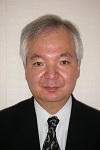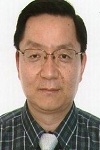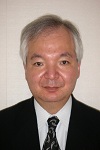Scientific Program
Keynote Session:
Title: Dementia is a disease of the Ependymal Layer: Novel theory from looking at cognitive impairment in Multiple Sclerosis
Biography:
Dr Philip McMillan is a Consultant in the NHS with over 23 years of medical expertise. His primary focus has been around Geriatrics and Neurological Rehabilitation and has developed unique perspectives on the capacity of the brain to recover from injuries and disease. Through international collaboration he has proposed a nutritional protocol for dementia reversal and has recently had a breakthrough theory on the pathology of dementia. His current aim is to lead the field of dementia to a new direction of research and treatment of this devastating disease.
Abstract:
The intricacies of dementia are explored in relation to varied studies on brain atrophy in multiple sclerosis and used to delineate the primary pathology of the latter. The theory examines the high frequency of cognitive impairment (Jongen 2012) in Multiple Sclerosis and its early manifestation during the disease. The fact that there is associated brain atrophy cannot be explained by the degree of damage to neurons. (Carlos 2015) noted a 5 to 10 times greater rate of atrophy in Multiple Sclerosis. The cognitive changes with Multiple Sclerosis are then correlated embryologically to the subependymal zone (Kazanis 2009) explaining the pathology of brain atrophy and why we have not made more progress through research.
Our understanding of the blood CSF barrier and the brain CSF interaction is poorly understood and probably holds the key to the symptoms of dementia (Erikson 2013). This interaction between the CSF and brain interstitial space is coordinated by the ependymal and subependymal zone of the brain. This is a novel concept that will aim to explain the links of all forms of dementia, as well as directing fertile areas for research.
Title: Radiation and Alzheimer's disease (AD)
Biography:
Dr. Feng Ru Tang received his MD degree from Medical School of Xi’an Jiao University, P.R. China and Ph.D. degrees in Neuroscience from National University of Singapore, Singapore. He is a Senior Research Scientist at the Singapore Nuclear Research and Safety Initiative in National University of Singapore. His research work focusses on neuropathophysiology in animal models of human neurological and neuropsychological disorders. Currently, he is working on early life radiation exposure-induced impairment of neurogenesis and cognitive deficit. He has edited two books and published more than 70 papers in international refereed neuroscience journals.
Abstract:
Brain insult in the early human life may set abnormal developmental events into motion leading to the development of different neurological and neuropsychological disorders. Recent systematic review of bibliographic databases from PubMed, EMBASE, Cochrane Library and Web of Science suggests that occupational exposure to extremely low frequency magnetic fields may increase the risk of Alzheimer's disease (AD). Low-dose irradiation induces neural signalling pathways with a high degree of concordance in their transcriptional response in the mouse brain tissue in the aging human brain, and in brain tissue from patients with Alzheimer's disease. It suggests that the molecular response of the mouse brain after low-dose irradiation involves the down-regulation of neural pathways associated with cognitive dysfunctions that are also down-regulated in normal human aging and Alzheimer's disease. In the United States, analysis of AD death rates versus radon background radiation and total background radiation suggested that ionizing radiation was a risk factor for AD. In this presentation I will review current progress on low dose radiation effect on the development of AD. Pre- and post-natal irradiation on the hippocampal neuropathology, cognitive impairment and relevant molecular mechanisms will also be summarised. Our study on the acute irradiation (at postnatal day 3, 10 and 21) induced impairment of neurogenesis, neuropsychological and miRNA changes will be discussed in the last part of my presentation.
Oral Session 1:
- Dementia Care | Vascular Dementia | Therapeutic Approach towards Dementia | Treatment Strategies & Drug Development | Neuroimaging

Chair
Anthony Tsarbopoulos
National and Kapodistrian University of Athens
Greece

Co-Chair
Hideo Tsukada
Hamamatsu Photonics
Japan
Title: Olive biophenols: a promising natural compound against the Alzheimer's disease pathogenesis
Biography:
Syed Haris Omar is working as a lecturer in Bioscience at Endeavour College of Natural Health, Melbourne, Australia, and having >8 Years of Lectureship experiences. He received Bachelor and Master of Pharmacy degree and awarded his PhD in Pharmacology from the School of Biomedical Sciences, Charles Sturt University, Australia in 2016. His research work was focused on Alzheimer’s disease prevention and treatment by using naturally derived Olive biophenols. Dr. Haris use transgenic mice models of Alzheimer’s disease to contribute in the better understanding of the plant biophenols role as an alternative approach against the amyloid- beta toxicity in Alzheimer’s disease. His research interest lies in the area of pharmacology, neuropharmacology, and natural products against the neurodegenerative diseases. He has published several peer- reviewed articles including research, reviews, book chapters and conference papers, and serving as Editorial Board Member and reviewer in Journals of repute. Currently, he is serving as a member in The Australian Society of Clinical and Experimental Pharmacologists and Toxicologist (ASCEPT), Australian Society for Biochemistry and Molecular Biology (ASBMB), American Chemical Society (ACS), American Association for The Advancement of Science (AAAS), and American Oil Chemist Society (AOCS). In addition, he is Vice Chair in the Local Health Advisory Committee, NSW Health, board member in The Australia Day Community Committee, and The Riverina Family Law Pathway Network Steering Committee.
Abstract:
The health beneficial action of olive (Olea europaea) phenolic (biophenols) components in the oil leaves and fruits are well established. A number of studies have elucidated the biological effects of isolated olive biophenols oleuropein, hydroxytyrosol, and verbascoside with particular attention on their antioxidant activity. Mounting evidences indicate that oxidative stress and metals (Cu & Fe) plays a central role in the production and progression of toxic amyloid beta (Aβ) in Alzheimer’s disease. I have recently added the neuroprotective action of olive biophenols, caffeic acid, verbascoside and olive extract in the neuroblastoma (SH-SY5Y) cells against the H2O2 and Cu-induced toxicities. Furthermore, olive biophenols oleuropein, verbascoside, quercetin and luteolin were significantly inhibited Aβ and protected neuroblastoma (SH-SY5Y) cells from Aβ- induced toxicity. In conclusion, in vitro, in vivo and epidemiological studies reported the pharmacological effects of olive biophenols effects as an antioxidant and inhibitor of Aβ in aging are growing and suggesting that olive biophenols could be natural medicine as dietary nutriceuticals against the Alzheimer’s disease.
Title: The usefulness of a seven-subtest and four-subtest short form of the WAIS in clinical practice
Biography:
Maria Lindau is licensed psychology and PhD in medicin, for many years she has worked as a clinical neuropsychologist in Sweden at Karolinska Huddinge - Karolinska Universitetssjukhuset and at Akademiska sjukhuset, Uppsala. The last decade she serves as an assistant professor in neuropsychology at the Dept. of Psychology, Stockholm University. Her research focus is on major and mild neurocognitive disorders (dementia/MCI), as well as on psychometrics.
Abstract:
The Wechsler Adult Intelligence Scale (WAIS) is an American scale and is one of the internationally most frequently applied neuropsychological (nps) measures for the assessment of cognitive levels in e.g. suspected neurodegenerative disorders, neuropsychiatric conditions as well as in non-clinical cases. Despite its popularity (Crawford, et al., 2008), one well known drawback with this instrument is the administration time, which amounts to 3-4 hours (Ryan, et al., 2015). Therefore, ever since the early days of the WAIS-scale (in the 1940s), short forms encompassing 2-8 subtests have been published (Úbeda, et al. , 2016; Denney, et al., 2015). The seven-subtest short form of the WAIS (7-scale), encompassing the subtests Information, Digit Span, Arithmetic (AR), Similarities (SI), Picture Completion, Block Design (BD) and Coding (CD) (Meyers, et al., 2013) is often used in Sweden, but has up to know not been validated in a Swedish context.
The purpose was to investigate whether the 7-scale was statistically valid to apply to the Swedish adaptation of the WAIS-IV, the possibilities of a further reduction of the 7-scale and the usefulness of shortened scales in clinical differential diagnosis.
Methodology: Nps assessment (WAIS) of 218 healthy individuals (aged 18-73) and nps assessment with the full scale WAIS of a clinical sample, n=145, including vascular disorders (stroke, hemorrhages), tumors, head trauma and multiple sclerosis. Statistics: Linear regression and discriminant analysis.
Preliminary findings: Linear regression indicated that the 7-scale explained 93.1 % of the variance of FSIQ, and that the best reduction of this model was a set of four tests (4-scale): AR, SI, BD, CD, predicting FSIQ with an 87.6% certainty, and representing the WAIS-scale all four indices. In the clinical sample 92.1% of the FSIQ variance was explained by the 4-model. Pairwise analysis of the disease groups with discriminant analysis showed that only the trauma and vascular groups were possible to significantly distinguish (p=. 013) and that 62.0 % were correctly classified. The sensitivity for the trauma group was 68%, the specificity 75.6%. In the vascular group the sensitivity was 82% and the specificity 98%. Clinical application of the 7-scale is under ongoing analysis.
Title: Resources and demands survey of patients with cognitive disorder in Shanghai
Biography:
Since 2010, Fang Yuan has been studying and working at Shanghai Mental Health Centre, an affiliated hospital of Shanghai Jiao Tong University. Li Xia, a chief physician of the Department of Elder Psychiatry, was her supervisor during her postgraduate study. Her research and work includes valuation of cognitive function, doing research on the needs of cognitive impaired patients' families and making intervention plans for dementia patients. She now works in a research team which is dedicated to the consolidation and optimization of resources for dementia patients in Shanghai. So far, the research team has created a system, which is led by specialist physicians with the cooperation of general practitioners, nurses, social workers and senior care facilities, to diagnosis and takes care of dementia patients with reference to degrees of severity of their diseases.
Abstract:
Statement of the Problem: In Shanghai China, cognitive disorders have caused heavy burdens to the patients' families and the society. Shanghai government has been gradually increasing investment in treatment of cognitive disorders to prepare for the aging society. It is necessary to understand the recovery resources which are currently available to patients with cognitive disorders and the assistance they actually need. The purpose of this study was to conduct a survey of those patients’ caregivers to find out the social support currently available to their families and the social resources they need urgently.
Methodology & Theoretical Orientation: We surveyed 90 caregivers via the internet to find out whether the cognitive impaired patients' families had received subsidies or services from the government. We also surveyed 40 caregivers by soliciting their replies to an online list of demand, trying to understand the demand of cognitive disorder patients for resources in seven aspects including medical support and financial Support (Figure 1).
Findings: Our survey results indicated that 21 out of 90 patients had received governmental subsidies, 4.44% of them had received in-home medical care and 3.33% of them had been covered by long-term care insurance. Our survey revealed that the improvement in the skills of in- home caregivers, support from senior care facilities and medical support are needed the most. About 31.71% of these 40 families hoped that the doctors would prescribe the medicines treating dementia each time in a dose of sufficient for one month's taking. 31.71% of these families hoped that the government could recommend to them senior care facilities.
Conclusion & Significance: Only a small percentage of patients with cognitive disorders have received certain support from the society. It is urgent to consolidate all resources including medical treatment and those available from local residential units.
Title: Current status in Indonesia and future trends
Biography:
Fine Farhani Muliati Rahman, S.Ked. a medical student from the Medical Faculty of Halu Oleo University, Kendari, Southeast Sulawesi, Indonesia. She has completed her program bachelor of medicine in 2016 and now she was doing her internship at Bahteramas Hospital, Indonesia as a young doctor. Her interest lies in the field of geriatrics patient with neurological disorders.
Abstract:
The Global burden of dementia has been estimated that 35.6 million people are living with dementia worldwide and projected to increase to 65.7 million by 2030 and 115.4 million by 2050. In Indonesia, the dementia prevalence increased twice every 5 years after passes 60 years old and reached to the sixth place of nine countries in Asia. It was estimated in 2010 that around 7.2% of population of aged people more than 60 years old in Indonesia. Yogyakarta was one of province in Indonesia with the highest aged people prevalence. Prevalence was counted from wide scale survey of aged people in Yogyakarta which was representative in describing population such as dementia survey in Yogyakarta. Dementia prevalence calculation was specifically done by using three measurement tools such as MMSE, AD8, and IADL. Dementia prevalence of 60 years old and more aged people in Yogyakarta achieved 20.1%. People living with age over 65 years could have increase dementia prevalence. Women had higher dementia prevalence than man because of the hormone estrogen’s effect and longer life span than men. From the environmental perspective point of view, aged people lived in urban area have lower dementia prevalence than in rural area. This happened because of activity and education factor which stimulated more brain using in the city than countryside. In conclusion, prevalence rate of dementia depends on age, sex, and environment factors.
Title: Vascular dementia: symptoms, progression, causes & support
Biography:
Paulan Gordon graduated from the University of Cincinnati Summa Cum Laude with a B.S. degree in Administrative Management. She worked for several years for a major investment firm in the United States as Director of Operations. When she was diagnosed with Vascular Dementia at age 57 (2012) she was forced to take a medical leave of absence. Since then she has become a mentor to several other women with dementia and is now a member of the Advisory Board for Dementia Action Alliance as well as a member of the Board of Directors for Dementia Action Alliance. Paulan now spends all her time educating and advocating for those living with dementia.
Abstract:
My speech opens with a review of symptoms of Vascular Dementia. Then I compare the differences between Alzheimer’s and Vascular Dementia in terms of progression and causation and give brief explanations of precipitating factors for the progression of Alzheimer’s versus Vascular Dementia. I also discuss the possibility that improper encoding causes the difficulties in memory retrieval. I discuss the importance of developing a support system and highlight online memory cafes and mentoring programs as very positive influences. Dementiamentors.org is recommended as a source for both online memory cafes and mentoring programs. Dementia Action Alliance or daanow.org is another educational and support organization that is highlighted. The importance of compensatory measures including items such as medication management and calendar management systems in addition to others are discussed. I then offer a plea to recognize that all individuals living with dementia are not “end stage” and are still quite intelligent and capable of contributing much and should be included in any discussion of dementia. Dementia Action Alliance has a Speakers Bureau and speakers are available at daanow.org. I close with the mention of my book, Vascular Dementia – An inside Perspective available on Amazon.
Title: Dementia and role of CT in our practice
Biography:
Umair Rashid is Chief Consultant Neuroradiologist & Head Department of Neuroradiology at Punjab Institute of Neuro Sciences, LGH, Lahore – Pakistan. He has more than 15 years of expertise in Transcranial Dopper. He established the 1st stroke centre in Pakistan. He is the President of Neuro Radiology Society, Pakistan. Dr Rashid has over 50 Publication in national & international journals as first author related to neuroradiology and 70 papers presented national & international conferences.
Abstract:
Objectives: To highlight the sensitivity of CT Scan Brain to exclude non cortical dementia. Although dementia is a clinical diagnosis, neuroimaging often is crucial for proper assessment. Magnetic resonance imaging (MRI) and computed tomography (CT) may identify nondegenerative and potentially treatable causes of dementia.
Methods: This study comprising of 100 patients of above 60 years age of either sex, presented with demented behavior of short duration which only had CT Scan Imaging. They all successfully diagnosed and treated accordingly. The CT Scan imaging remain quite informative to exclude the cortical dementia.
Cortical dementia is the global and acquired impairment of mental function and is a major health problem, particularly in the elderly. It’s most common forms with substantial imaging data are dementia of the Alzheimer’s type (AD), frontotemporal dementia and lewy body dementia. The most commonly used imaging modalities are magnetic resonance imaging and emission tomography in their various forms.
Results: Out of all 100 patients only four patients were not able to diagnosed the cause of dementia, which were treated as cortical dementia. Our findings favor the cortical dementia, which is not that common in our country?
Conclusion: Less expensive and frequently available around the country, CT Scan remain the choice of neuroimaging to diagnose, various cause of dementia and to exclude common cortical demontic causes.
Keynote Session:
Title: PET analysis of mitochondria in living brain for dementia diagnose
Biography:
Dr. Hideo Tsukada received Ph.D. from Shizuoka College of Pharmacy, Japan. He was visiting researcher in Uppsala University PET Center, directed by Professor Bengt Langstrom, from 1990 to 91. At present, he is the senior manager of PET Center, Central Research Laboratory, Hamamatsu Photonics, Japan, and conducting PET researches in preclinical to clinical stages. He has published more than 250 papers, being awarded by the Society for Nuclear Medicine (2009), and Japan Molecular Imaging Award (2010). He is serving as the visiting professor in Hamamatsu University School of Medicine, and University of Shizuoka, School of Pharmaceutical Sciences.
Abstract:
Statement of the Problem: FDG-PET is a well-established technique, however [18F]FDG was taken up into not only normal tissues but also inflammatory regions with microglial activation. We developed a novel PET probe, [18F]BCPP-EF, for quantitative imaging of mitochondrial complex 1 (MC-1) activity in vivo, and aging effects on MC-I activity was investigated in the living brains of monkeys using animal PET scanner. The present study was aimed to assess the effects of amyloid-ï¢ (Aï¢) deposition on rCMRglc, translocator protein (TSPO) activity, an established marker of microglial activation, and MC-I activity in aged monkey brain. Methodology & Theoretical Orientation: PET scans using [11C]PIB for Aï¢, [11C]DPA-713 for TSPO, [18F]FDG for rCMRglc, and [18F]BCPP-EF for MC-1 were performed under conscious states in aged animals. Scans of [18F]FDG and [18F]BCPP-EF were conducted with arterial blood sampling. Binding of [18F]BCPP-EF to MC-I was analyzed as total distribution volume (VT). Energy metabolism was calculated using [18F]FDG as rCMRglc. Aï¢ deposition and TSPO activity were determined as SUV of [11C]PIB and [11C]DPA-713, respectively. Findings: When plotted VT of [18F]BCPP-EF against SUVR of [11C]PIB in the cerebral cortical regions, it showed a significant reverse correlation between them. Plotting of SUV of [11C]DPA-713 against SUVR of [11C]PIB resulted in a significant positive correlation, suggesting that Aï¢ deposition-induced inflammatory effects with microglial activation. In contrast, plotting of rCMRglc against SUVR of [11C]PIB did not reach statistically significant level. Plotting of rCMRglc against SUV of [11C]DPA-713 revealed a significant positive correlation. Furthermore, when plotted VT of [18F]BCPP-EF in olfactory bulb against SUVR of [11C]PIB in the limbic system, it showed a significant reverse correlation between them, suggesting the deficit mechanism of olfactory identification ability in dementia patients. Conclusion & Significance: The present study demonstrated that rCMRglc measured using [18F]FDG could not always reflect normal neuronal/astroglial activity disturbed by inflammatory microglial activation. In contrast, [18F]BCPP-EF could be a potential PET probe for quantitative imaging of age-related neurodegenerative alterations as a change in MC-1 activity in the living brain using PET.
Title: Factors predicting mortality at the memory clinic at Siriraj Hospital: The Thai cohort
Biography:
Vorapun Senanarong is trained in general medicine, neurology, and geriatric medicine as senior house officer, registrar, and fellow from Newcastle Upon Tyne, UK and UCLA, LA USA. She is one of the experts for WHO on the ICD11 Classification of Neurocognitive disorders. Her research areas are focused in dementia, geriatric neuropsychiatry and behavioral neurology. She has received grants from the National Research Council of Thailand, the Thailand Research Fund, Mahidol University Research Fund, and FIRCA(NIH). She is currently an Associate Professor, Head of Division of Neurology, Department of Medicine, Faculty of Medicine Siriraj Hospital. Also the Vice President of the Dementia Association of Thailand. And a member of the executive committee of the Neurological Society of Thailand, and of Asian Society Against Dementia.
Abstract:
Individuals who registered at the MC during 2005 to mid of 2017 (n = 1,284) were included. 307 had died (mortality prevalence 23.9%, 95% CI 21.6 – 26.3). Only 815 subjects had neuroimaging at Siriraj Hospital were analyzed looking for mortality risks. Age, gender, medical comorbidities, vascular risk factors, cognition, and function were among parameters looking for mortality risks. Mean, median, standard deviation, chi-square test, hazard ratio, and survival analysis were utilized in this study.
Results: Diagnoses of our cohort were AD(433,53.1%), VaD(73,9%), mixed AD & VaD(42,5.2%), FTD(29,3.6%), PDD(16,2%), DLB(21,2.6%), reversible dementia(17,2.1%), and NPH(16.2%). 168(20.6%) had MCI. Of the 815, 74 died (9.08%, 95%CI 7.2-11.3). The mean(SD) age of those who were alive and dead was 71.31(9.65), and 73.22(8.71) (p=0.103). TMSE scores of those who were alive and dead was 21.33(5.92) and 19.26(6.13)(p=0.02). Patients, who died, were more likely to be older at onset, and have higher dementia severity at baseline. Other mortality risks in this study were history of valvular heart disease at baseline, and use of diuretics or angiotensin converting enzyme inhibitor (ACEI) antihypertensive drugs at the entry of the MC. Regarding the dementia type, we found that Alzheimer disease with cerebrovascular disease had the highest mortality rate (30.8%). The mean duration of symptoms before entering the MC was significantly longer in the deceased group (11.8 years VS 9.5 years, p < 0.001). There was no difference in daily function, FAQ scores, PCA scores, CMBs amount, number of neuropsychiatric symptoms at baseline between those who had died and those who were alive. Being female (p=0.02,LR=5.38, having CAD(p=0.01,LR=6.51) and hyperlipidemia(p=0.035,LR=4.74) at baseline increased a risk of death later. ARWMC scores of those who were alive and dead was 7.36(5.57) and 10.40(6.02) p<0.001, OR=2.56(<9 vs >=9). The mean(SD,SE) number of lacuna infarction of those who were alive and dead was 1.15(2.33,0.09) and 2.29(3.03,0.36) (p=0.002,OR=3.21(0 vs >=1),OR=2.47(<2 vs >=2). Mean Rt & Lt MTA scores of those who were alive and dead was 1.25(0.95) and 1.63(0.91)(p=0.002,OR=2.58(0-1vs >=2). Those with 1 or more CMBs had increased mortality risk (p<0.001, OR=2.26). GCA scores of those who were alive and dead was 1.10(0.70) and 1.43(0.62)(p<0.001, OR=4.05(0 vs >=1).
Conclusion: We found that age, dementia severity, and vascular risk namely valvular heart disease and antihypertensive use were among clinical mortality risk factors. Having high WML burden, high MTA scores, more lacunar infarctions, having one or more CMBs, were all a risk for mortality in this study.
Title: The quest to understand Alzheimer’s disease and find new treatments
Biography:
Anthony Tsarbopoulos is Associate Professor at the National and Kapodistrian University of Athens (NKUA) Medical School, Greece. He is also the Director of the Bioanalytical Department at The Goulandris Natural History Museum. He received his BS degree in Chemistry from NKUA and his PhD in Analytical Chemistry from Michigan State University. He was a Senior Research Fellow at the Mayo Medical School, and then a Group Leader in the Structural Chemistry Department of Merck/Schering- Plough Research Institute (1988-1998). He has over 86 publications in refereed scientific journals with more than 2350 citations (h-index: 28), and over 155 presentations in international conferences.
Abstract:
Neurodegenerative disorders such as Alzheimer’s disease (AD) and Parkinson’s Disease are persistent progressive diseases and they are associated with abnormal accumulation and aggregation of disease-specific proteins and peptides and inclusion bodies in selected brain regions. AD is the most common type of dementia, associated with a decline in cognitive ability and premature death. AD has been puzzling the scientific community for decades, and it has been a major public health problem for which there is currently no disease-modifying treatment. This is mainly caused by the non- definitive hypothesis of the root cause of this disease.
It has been proposed that the beta amyloid peptide (Aβ), abnormal tau protein or probably both play critical role in the AD development leading to the formation of senile plaques and neurofibrillary tangles, thus making them promising targets for next-generation drug therapies. To date, there has been a growing knowledge of the underlying cause of AD and multiple active clinical trials for potential treatments.
In this presentation, recent progress in the understanding of the AD pathogenesis will be discussed, with emphasis on the amyloid cascade hypothesis, the aggregation mechanism and how to inhibit the formation of Aβ oligomers, because they are considered to be most toxic amyloid species. Our approach combines in vitro screening followed by in vivo evaluation of several bioactive antioxidants as novel aggregation inhibitors. The use of these dietary antioxidants could be a promising way to prevent amyloid toxicity, thus slowing disease progression or even successfully preventing the disease from advancing to dementia.
Oral Session 1:
- Alzheimers disease | Therapeutic Approach towards Dementia

Chair
Philip McMillan
MRCP
United Kingdom
Title: The quest to understand Alzheimers disease and find new treatments
Biography:
Anthony Tsarbopoulos is Associate Professor at the National and Kapodistrian University of Athens (NKUA) Medical School, Greece. He is also the Director of the Bioanalytical Department at The Goulandris Natural History Museum. He received his BS degree in Chemistry from NKUA and his PhD in Analytical Chemistry from Michigan State University. He was a Senior Research Fellow at the Mayo Medical School, and then a Group Leader in the Structural Chemistry Department of Merck/Schering- Plough Research Institute (1988-1998). He has over 86 publications in refereed scientific journals with more than 2350 citations (h-index: 28), and over 155 presentations in international conferences.
Abstract:
Neurodegenerative disorders such as Alzheimer’s disease (AD) and Parkinson’s Disease are persistent progressive diseases and they are associated with abnormal accumulation and aggregation of disease-specific proteins and peptides and inclusion bodies in selected brain regions. AD is the most common type of dementia, associated with a decline in cognitive ability and premature death. AD has been puzzling the scientific community for decades, and it has been a major public health problem for which there is currently no disease-modifying treatment. This is mainly caused by the non- definitive hypothesis of the root cause of this disease.
It has been proposed that the beta amyloid peptide (Aβ), abnormal tau protein or probably both play critical role in the AD development leading to the formation of senile plaques and neurofibrillary tangles, thus making them promising targets for next-generation drug therapies. To date, there has been a growing knowledge of the underlying cause of AD and multiple active clinical trials for potential treatments.
In this presentation, recent progress in the understanding of the AD pathogenesis will be discussed, with emphasis on the amyloid cascade hypothesis, the aggregation mechanism and how to inhibit the formation of Aβ oligomers, because they are considered to be most toxic amyloid species. Our approach combines in vitro screening followed by in vivo evaluation of several bioactive antioxidants as novel aggregation inhibitors. The use of these dietary antioxidants could be a promising way to prevent amyloid toxicity, thus slowing disease progression or even successfully preventing the disease from advancing to dementia.
Title: Sleep in Alzheimer's disease
Biography:
Wahid Rashidzada has completed his MD from Fatima University School of Medicine in the Philippines and Completed Neurology Specialty from New York College of Medicine and Sleep Medicine Fellowship from University of Kansas City. He is clinical assistant professor of Sleep Medicine and Neurology at Stony Brook Southampton Hospital.
Abstract:
Sleep disturbances were once considered to be a bi-product of neurodegeneration. However, they are not limited to advanced disease states but occur even before cognitive decline and may be predictive of neurodegeneration. Sleep disorders are common in dementia and Alzheimer's disease (AD) and a major cause of institutionalization. Sleep abnormalities can appear years before cognitive decline and may be predictive of dementia as is with AD. A two way relationship between sleep and amyloid β (Aβ) has been well established with disturbed sleep and increased wakefulness leading to increased Aβ production and decreased Aβ clearance. Aβ deposition is associated with increased wakefulness and sleep disturbances. In the sleep wake cycle, Aβ is higher during wakefulness and lower during sleep. This fluctuation is lost with Aβ deposition, likely due to its sequestration into amyloid plaques. Aβ is believed to play a significant role in the development of sleep disturbances in the preclinical and clinical phases of AD. In addition abnormal tau is the earliest observable AD-like pathology in the brain with abnormal tau phosphorylation in many sleep regulating regions such as the locus coeruleus, dorsal raphe, tuberomammillary nucleus, parabrachial nucleus, and basal forebrain prior to the appearance of amyloid or cortical tau pathology. Human tau mouse models exhibit AD-like sleep disturbances. Sleep changes are common in tauopathies including frontotemporal dementia and progressive supranuclear palsy. Together these observations suggest that tau pathology can induce sleep disturbances and may play a large role in the sleep disruption seen in AD. To understand the relationship between sleep and AD it is necessary to understand the role of Aβ and the role of tau in sleep regulation in the brain.














